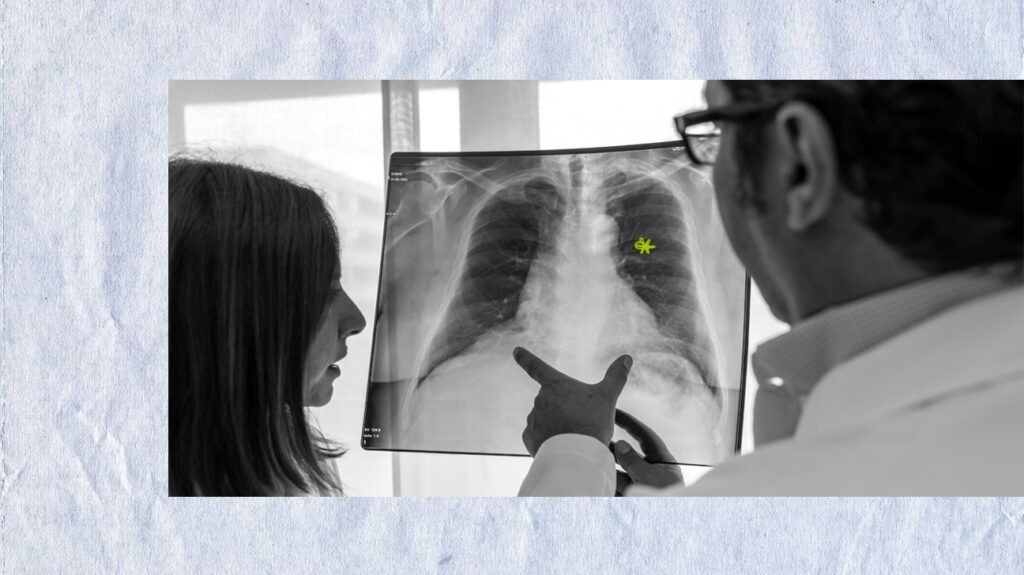Experiencing pain in your lungs can be a worrying sensation. It’s important to understand that while you might feel pain originating from your lungs, the lungs themselves actually have very few nerve endings that can directly transmit pain signals. Often, what feels like “lung pain” is actually discomfort arising from the tissues surrounding the lungs, the chest wall, or even referred pain from other areas. However, any persistent or unexplained chest pain, especially if associated with breathing difficulties, should be taken seriously and evaluated by a healthcare professional. This article will explore some of the common reasons why you might be experiencing pain that feels like it’s coming from your lungs.
One frequent cause of chest discomfort that can feel like lung pain is asthma. Asthma is a chronic condition that inflames and narrows the airways, making it harder to breathe. This inflammation and the resulting airway constriction can lead to a feeling of tightness in the chest. While asthma typically affects both lungs, the generalized chest tightness can sometimes be perceived as lung pain. Asthma symptoms often include wheezing, coughing, and shortness of breath, alongside this chest tightness.
 Chest X-ray showing lungs
Chest X-ray showing lungs
Another condition that can mimic lung pain is costochondritis. This condition involves inflammation of the cartilage that connects your ribs to your breastbone. The pain from costochondritis can be sharp and localized, often on one side of the chest, leading individuals to believe they are experiencing lung pain. This pain is typically worsened by movement or pressure on the chest.
Hyperventilation, or rapid and shallow breathing, can also lead to chest tightness and discomfort that might be misinterpreted as lung pain. Hyperventilation can be triggered by anxiety, panic attacks, or certain medical conditions. This rapid breathing disrupts the balance of oxygen and carbon dioxide in the body, leading to symptoms like chest tightness, dizziness, headache, and difficulty concentrating.
While less common initially, lung cancer is a serious condition that can eventually cause lung pain as it progresses. In its early stages, lung cancer often doesn’t present with noticeable symptoms. However, as the cancer grows and potentially spreads, it can cause persistent coughing, shortness of breath, fatigue, unexplained weight loss, and chest pain. It’s crucial to remember that lung pain is not usually an early symptom of lung cancer, but it can develop as the disease advances.
A more acute and serious cause of sudden lung pain is pneumothorax, also known as a collapsed lung. This occurs when air leaks into the space between your lungs and chest wall, causing the lung to collapse. Pneumothorax can happen spontaneously, due to injury, or as a complication of lung disease. It typically causes sudden, sharp chest pain on the affected side, along with shortness of breath.
Pleural effusion is another condition involving the pleural space, the lining surrounding the lungs. Pleural effusion refers to the buildup of excess fluid in this space. This fluid accumulation can put pressure on the lung and chest wall, causing discomfort or pain, and difficulty breathing, usually on one side of the chest.
Pleurisy, or pleuritis, is inflammation of the pleura, the two layers of membrane that line the chest cavity and surround each lung. When these membranes become inflamed, they rub against each other during breathing, causing sharp, stabbing pain that worsens with inhalation and exhalation. Pleurisy pain is often accompanied by shortness of breath and is frequently caused by viral or bacterial infections, or other underlying conditions like lupus.
Pneumonia, a lung infection caused by bacteria, viruses, or fungi, can also cause chest pain. Pneumonia inflames the air sacs in one or both lungs, and if the infection is located in a specific area of the lung, the pain might be felt more intensely on that side. Other common symptoms of pneumonia include cough, fever, chills, and shortness of breath.
Finally, a pulmonary embolism (PE), a serious and potentially life-threatening condition, can also cause lung pain. A pulmonary embolism occurs when a blood clot travels to the lungs and blocks an artery. This blockage can cause sudden chest pain, often sharp and stabbing, along with shortness of breath, rapid heart rate, and coughing, sometimes with blood. Pulmonary embolism often develops after prolonged periods of immobility or surgery.
It’s essential to reiterate that experiencing pain that feels like it originates in your lungs can have various causes, some more serious than others. If you are experiencing persistent or worsening lung pain, especially if accompanied by symptoms like shortness of breath, cough, fever, or dizziness, it is crucial to seek medical attention promptly for an accurate diagnosis and appropriate treatment. Self-diagnosis can be misleading, and timely medical evaluation is key to managing any underlying health issue effectively.